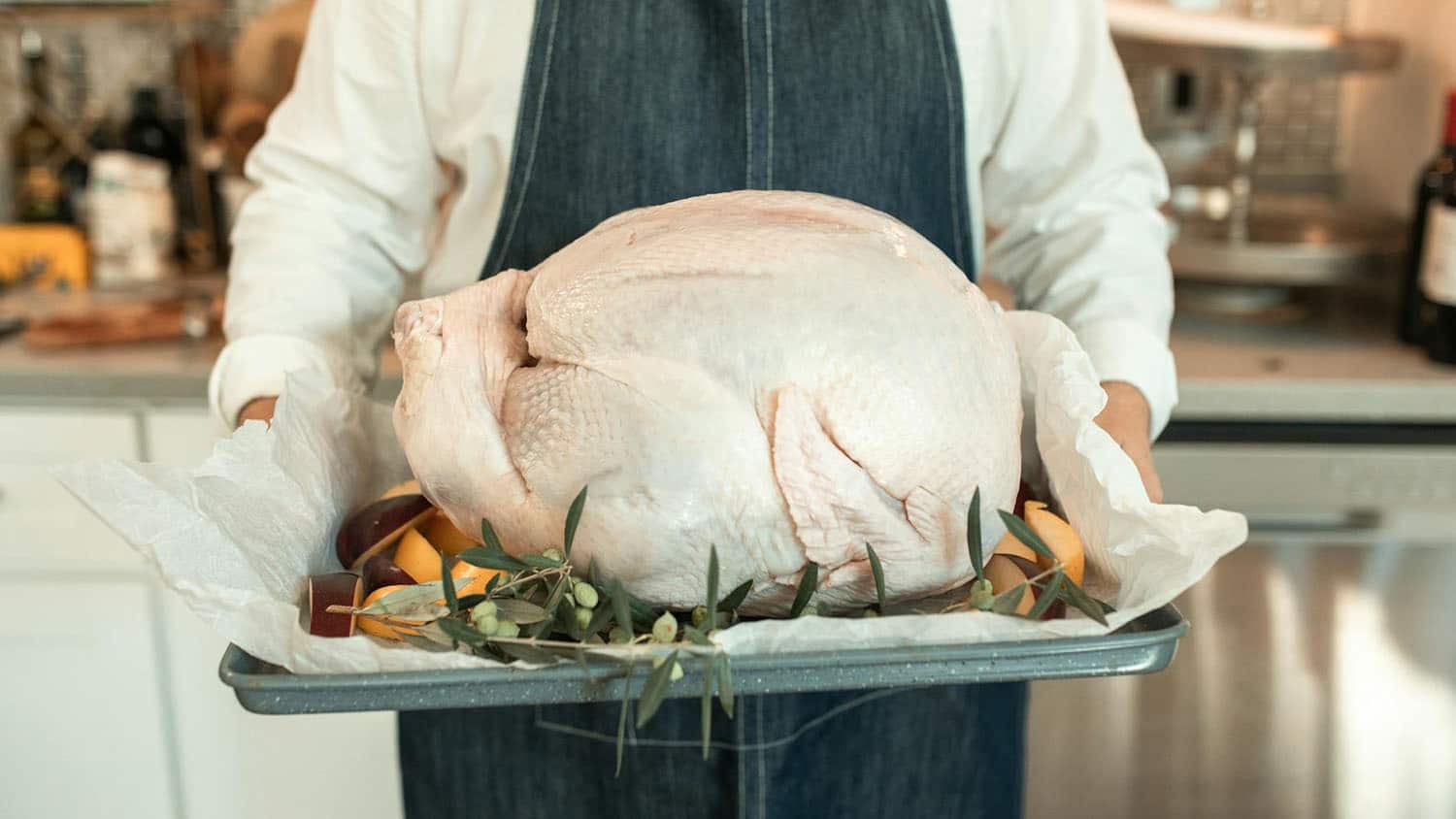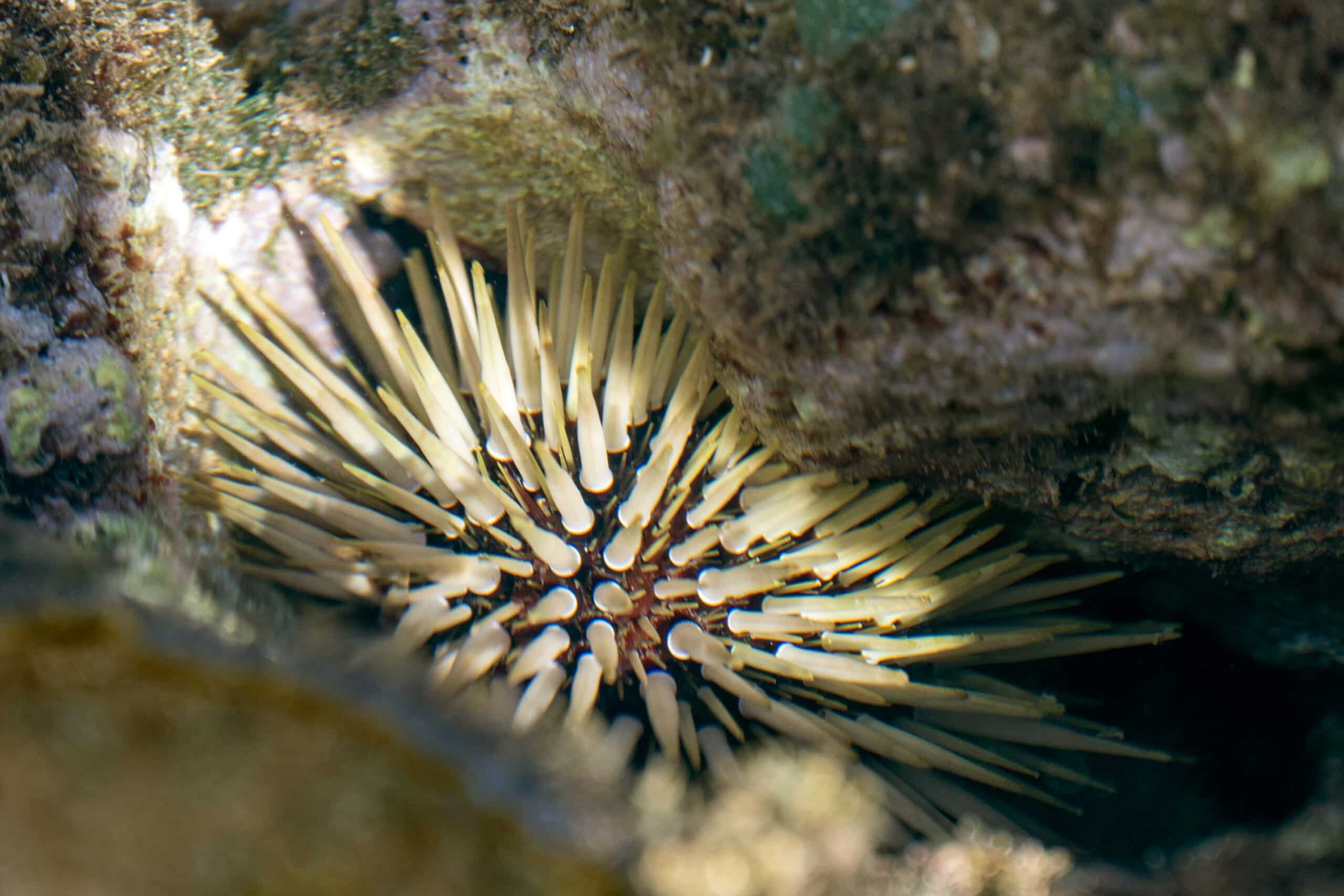Editor’s note: this feature is part of a series that focuses on helping people reduce food safety risks during the holidays.
Thanksgiving is usually associated with cooking a turkey. But most people don’t cook turkey very often, and nobody wants to make their loved ones barf at Thanksgiving. So how can you avoid foodborne illness this Thanksgiving?
We talked to food safety expert Ellen Shumaker to find out how you can reduce your risk of foodborne illness during every stage of preparing a turkey – from thawing it to putting it on the table.
What is the best way to thaw a turkey?
People have a lot of questions about how to thaw a turkey. Can I leave a turkey out overnight to thaw? Can I finish thawing my turkey on the counter? Do I need to thaw my turkey in the refrigerator?
“Don’t leave your turkey out overnight to thaw, and don’t leave it on the counter for hours,” Shumaker says. “Thawing the bird at room temperature means the outside of the turkey will get much warmer than the inside of the turkey, which allows microbes to reproduce rapidly. And even if you kill those microbes off by cooking the bird, some of these bacteria create toxins that remain in the meat even after the microbes themselves have been destroyed.”
So, how should you thaw the turkey?
“If you’re getting a frozen turkey, and you have the lead time, a great option is to thaw it in your refrigerator,” Shumaker says. “And the rule of thumb there is to allow 24 hours of thawing time for every 5 pounds of turkey. So, if you have a 20-pound turkey, you’ll need to thaw it in the fridge for four days.”
However, if you don’t have room in the fridge, or if you bought your turkey too late to thaw it in the refrigerator, you have a few options. You can submerge the turkey in cool water, but you’ll need to replace the water every 30 minutes, because you don’t want the bird to sit in room temperature water.
“You’ll want to check the temperature of the turkey every so often to make sure it is staying at or below 41 degrees Fahrenheit,” Shumaker says.
This method is somewhat labor intensive, and you’ll need about 30 minutes per pound. So, a 20-pound turkey would thaw in about 10 hours.
The other option, for smaller birds, is to use the defrost function on your microwave. (Make sure to remove any metal ties that might be on the bird!) This usually takes about six minutes per pound.
Whether submerging in cool water or microwaving, you’ll want to make sure you’re cooking the bird as soon as it has thawed, since you likely haven’t been able to fully control the temperature of the bird during the thawing process.
Lastly, if you have a turkey that is partially thawed, but is still frozen in the center, you can cook it – you’ll just need to increase the cook time by about 50%. So, if you had planned three hours to cook the bird, you’ll need to increase that to about four and a half hours.
Is it safe to brine a turkey?
Many recipes recommend “brining” your turkey. Brining refers to soaking the turkey in saltwater, often alongside other ingredients, such as sugar or peppercorns. But this raises a number of questions. Can I brine a turkey at room temperature? Can bacteria grow in turkey brine?
“It can be safe to brine a turkey as long as you do not brine the turkey at room temperature – you want to do it at or below 41 degrees Fahrenheit,” Shumaker says. “You can do that in the refrigerator or maybe use ice to keep the brine cold. Bacteria can absolutely thrive in turkey brine, so maintaining a safe temperature is important.”
Make sure that the brine is disposed of properly and that you are cleaning and disinfecting the container the turkey is in, so that you don’t get ‘cross-contamination’ – where bacteria from the bird or the brine contaminate other surfaces or foods.
Do I need to wash the turkey before cooking it?
You don’t need to wash the turkey before cooking. In fact, you shouldn’t wash the turkey before cooking it. It doesn’t make the turkey any safer. It doesn’t change the flavor. And it does increase the likelihood that you will inadvertently cross-contaminate other surfaces in your kitchen, which could then lead to pathogens getting into salads, pies or other elements of your meal.
How do I tell if a turkey is fully cooked?
In other words, what temperature should I cook the turkey to? And where do I check the turkey’s temperature?
You need to cook the turkey until it reaches an internal temperature of 165 degrees Fahrenheit. Don’t rely on things like what color the bird’s “juices” are – that doesn’t work.
The best way to check the bird’s temperature is with a tip-sensitive digital thermometer (dial thermometers aren’t as accurate and can be difficult to read). You’ll want to check the temperature at multiple spots on the bird, since turkeys don’t cook evenly. Check the breast, wing, thigh, and so on, inserting the thermometer into the thickest parts of the bird. And make sure the thermometer isn’t hitting a bone, since that throws off the reading.
“Some recipes tell you to stop cooking when the bird hits 160 degrees, and that the temperature will increase to 165 as it rests,” Shumaker says. “But that’s not always the case, and turkey really doesn’t heat evenly, so you’ll want to make sure the bird reaches 165 degrees before you stop cooking.”
What are the rules for frying turkey?
“When frying a turkey, you want to use oils that have a higher smoke point, such as peanut or canola oil, so the oil doesn’t burn,” Shumaker says. “The oil needs to be heated to around 350 degrees Fahrenheit. You’ll still need to check the temperature of the bird to ensure doneness.”
However, frying a turkey poses an additional risk: explosions.
If any part of the turkey is still frozen, that part of the turkey will be retaining a significant amount of water. And when that frozen water comes into contact with the hot oil, it heats up and turns into steam. That steam expands very quickly, causing an explosion of hot oil.
So, if you’re frying a turkey, make sure your turkey is completely thawed.
What do I do with the turkey neck and giblets? (And what are giblets, anyway?)
Many turkeys are sold with the neck and/or giblets stuffed into the body cavity, so that they can be used to make gravy. (“Giblets” is just another term for edible organ meat, often including the heart, gizzard and kidneys.) It’s fine to use neck meat and giblets in your gravy. However, you still need to cook them to 165 degrees Fahrenheit.
How can I avoid cross-contamination?
A lot of foodborne illness occurs due to cross-contamination. To reduce the risk of the raw turkey contaminating other surfaces and, ultimately, other dishes, there are a few things to keep in mind.
First, make sure that the turkey is in a pan or other container when thawing, to ensure the bird doesn’t inadvertently drip onto other things in your refrigerator.
Second, make sure to clean and sanitize any container the bird was in while thawing or brining. Cleaning removes visible residues (like soil or other dirt) from a surface and can be done by applying soap and scrubbing. Sanitizing reduces the number of bacteria and viruses to a safe level. Cleaning must occur before sanitizing because residue on a surface can weaken the effectiveness of a sanitizer.
Third, make sure to wash and sanitize any counter or surface the bird was on while being prepped to go into the oven (or deep fryer). This includes the sink, as well as any utensils you might have used when prepping the bird.
Fourth, don’t forget to wash your hands. Seriously. Wash your hands.
How long can I let the cooked turkey sit on the counter before serving it?
“Cooked turkey can sit out for no more than four hours before it increases risk of foodborne illness,” Shumaker says. “So you can let the bird rest on the counter for a while before serving, but you need to give yourself enough time to eat and then get the leftovers back into the refrigerator within that four-hour window.”
You are now ready to prepare a turkey without making your loved ones violently ill.
Bon appetit!



